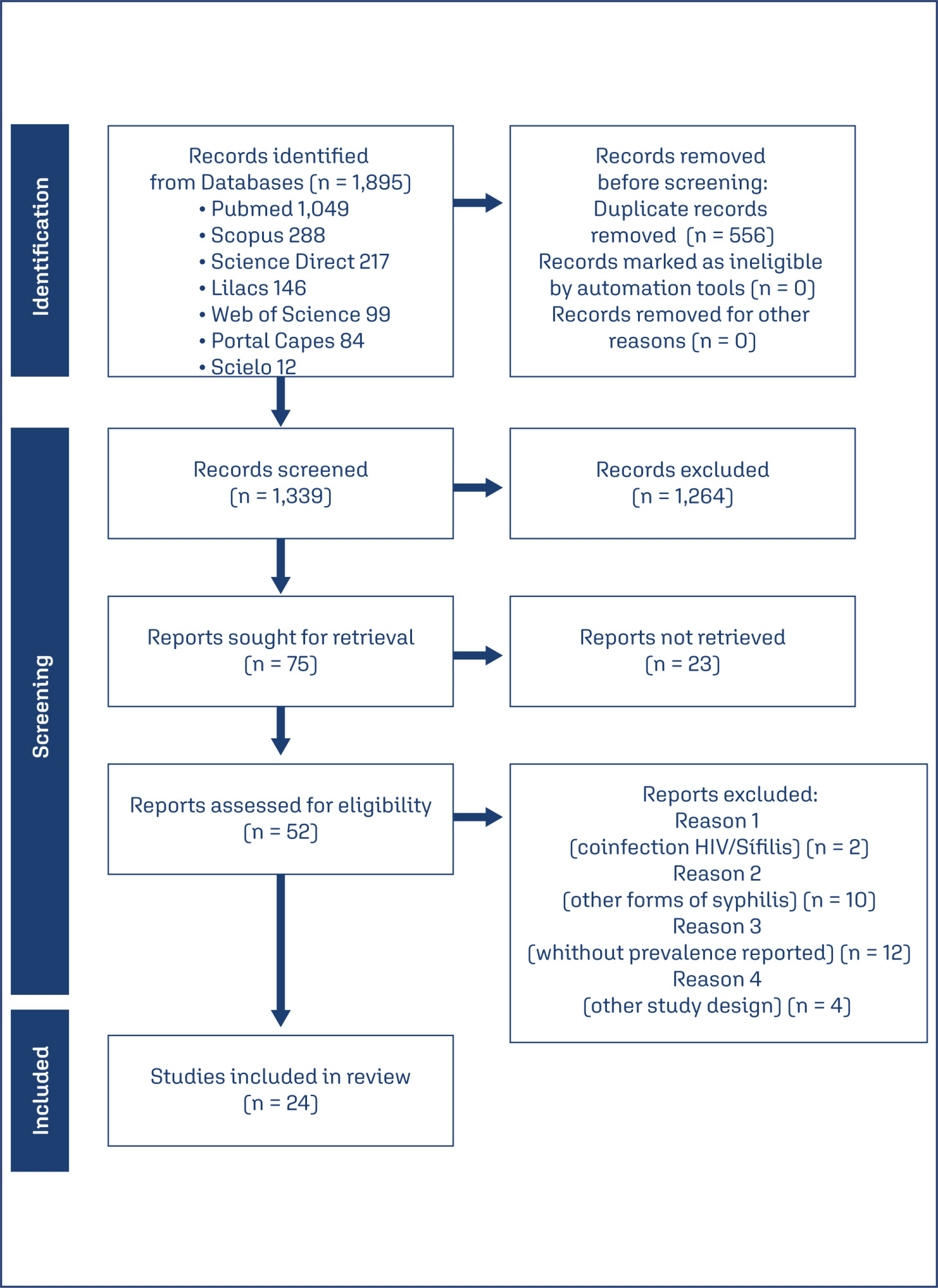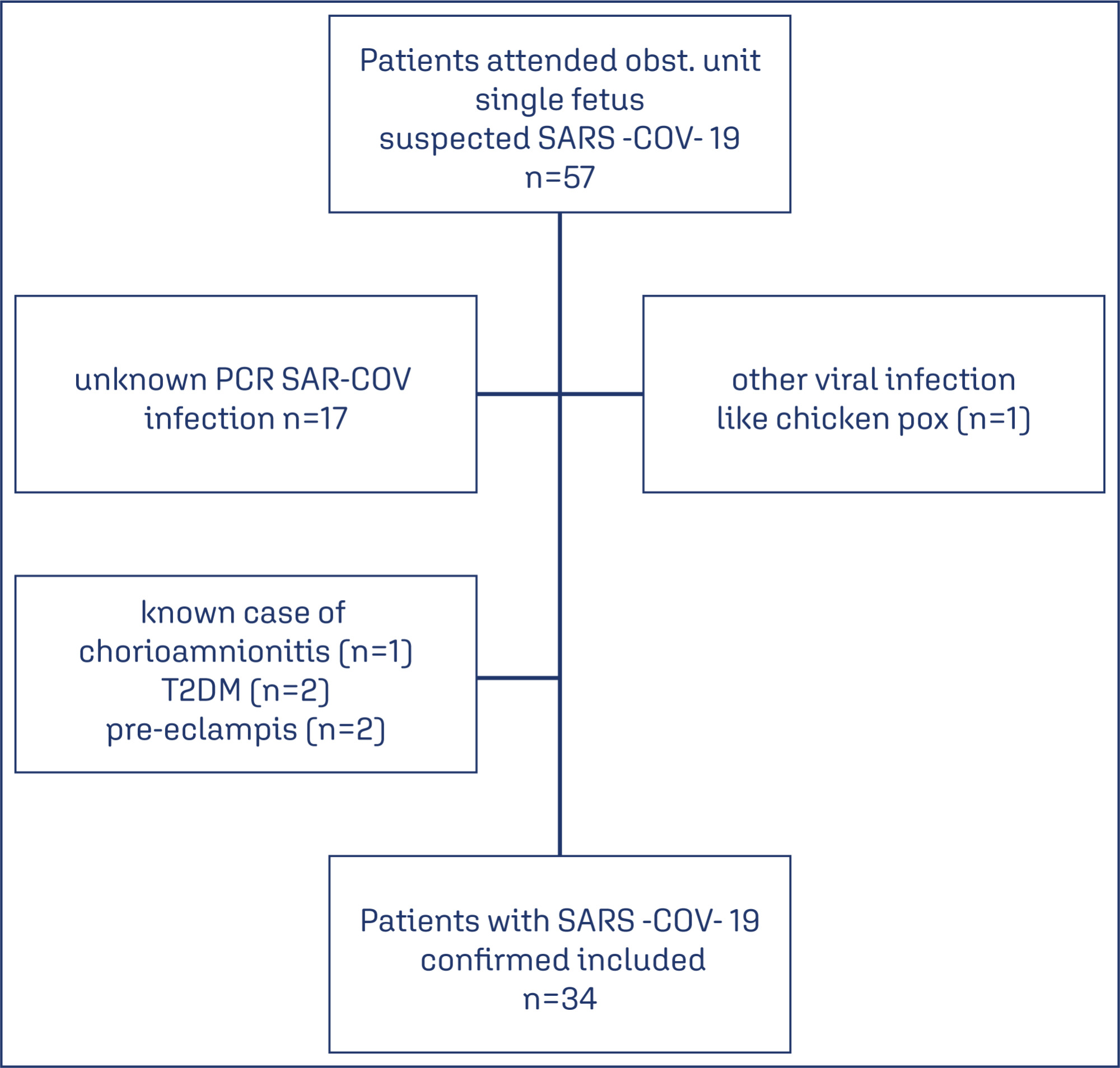Summary
Revista Brasileira de Ginecologia e Obstetrícia. 2024;46:e-rbgo27
To evaluate whether the continuous support provided by doulas influences the endogenous release of serotonin in parturients.
This pilot study included 24 primigravidae at term. Of these, 12 women received continuous doula support (Experimental Group), whereas the other 12 received the usual assistance without doula support (Control Group). Blood samples were collected from all the women at the active and expulsion stages of labor and at the fourth period of labor (Greenberg period) for evaluation of their serotonin levels using high-performance liquid chromatography.
The average serotonin concentrations in the control and experimental groups were respectively 159.33 and 150.02 ng/mL at the active stage, 179.13 and 162.65 ng/mL at the expulsion stage, and 198.94 and 221.21 ng/mL at the Greenberg period. There were no statistically significant differences in serotonin concentrations between the two groups at the active and expulsion stages of labor. By contrast, within the experimental group, a significant increase in serotonin concentration was observed in the Greenberg period compared with the levels in the active and expulsion stages (p < 0.05).
The novelty of this study relies on the ability to correlate the influence of the continuous support offered by doulas with the release of serotonin in parturients, with the results suggesting that the assistance received during labor can modulate the levels of hormone release in the Greenberg period.
RBR-4zjjm4h
Summary
Revista Brasileira de Ginecologia e Obstetrícia. 2024;46:e-rbgo28
This systematic review accompanied by a meta-analysis aimed to estimate the prevalence of syphilis in pregnant women in Brazil and describe its associated factors.
Following the establishment the search strategies and the registration of the review protocol in PROSPERO, we conducted a search for relevant articles in the Pubmed, LILACS, Science Direct, SciELO and Web of Science databases. Our inclusion criteria were cross-sectional studies published between 2005 and 2023, with no language restrictions. The combined prevalence of syphilis infection was estimated using the random effects model in the R Software with a 95% confidence interval (95% CI) and p < 0.01 as statistically significant.
A total of 24 articles were recruited, which together investigated 221,884 women. The combined prevalence of syphilis in pregnant women in Brazil was 1.79% (95% CI: 1.24-2.57%), and the main factors associated with its occurrence were black and brown skin color, low education and factors related to the partner.
There was a high prevalence of syphilis in pregnancy in Brazil, mainly associated with socioeconomic factors.

Summary
Revista Brasileira de Ginecologia e Obstetrícia. 2024;46:e-rbgo3
The aims of the study are to describe the association of coronavirus disease (COVID-19) with the abnormal histopathological findings in human placenta and to highlight the potential predictors of these histopathological findings.
A retrospective cohort study, held in two obstetric units from January 2021- 2022, 34 patients who were confirmed cases of COVID- 19 were followed up till the time of delivery as their placenta were sent for histopathology. Patients diagnosed with other viral infections, chorioamnionitis, or were known case of as pre-term or term pre labour rupture of membrans (PROM) were excluded as well as pre exisiting diabetes mellitus or pre-eclampsia. Data analysis were performed using STATA software version 16.
Specific histopatological findings (fetal vascular malperfusion, maternal vascular malperfusion, inflammatory pathology and thrombotic finding) were significantly high among 13 (38.2%) of the study group who got infected earlier in pregnancy (P<0.001). The period between the diagnosis of COVID-19 and the delivery significantly increases the odds of the presence of pathological findings by 2.75 times for each week the patients getting infected earlier.
Association of abnormal placental histopathological findings with COVID-19 infection in pregnancy and the potential predictor for the occurrence of placental findings is the longer duration between the diagnosis of the infection and the delivery.

Summary
Revista Brasileira de Ginecologia e Obstetrícia. 2024;46:e-rbgo31
To compare Transforming growth factor beta-1 (TGF-β1) expression in patients with and without adenomyosis.
A prospective design was performed including 49 patients submitted to hysterectomy. Immunohistochemistry was performed on anatomopathological samples staged in paraffin blocks from patients with and without adenomyosis. The sample contained 28 adenomyosis cases and 21 controls. Student's t-test and multivariate logistic regression tests were used for statistical analysis. Associations were considered significant at p < 0.05.
We found no significant association between adenomyosis and: smoking (p = 0.75), miscarriage (p = 0.29), number of previous pregnancies (p = 0.85), curettage (p = 0.81), pelvic pain (p = 0.72) and myoma (p = 0.15). However, we did find a relationship between adenomyosis and abnormal uterine bleeding (AUB) (p = 0.02) and previous cesarean section (p = 0.02). The mean TGF-β1 intensity (mean ± SD) in the ectopic endometrium of women with adenomyosis showed no significant association (184.17 ± 9.4 vs.184.66 ± 16.08, p = 0.86) from the topic endometrium of women without adenomyosis.
TGF-β1 expression was not increased in the ectopic endometrium of women with adenomyosis.
Summary
Revista Brasileira de Ginecologia e Obstetrícia. 2024;46:e-rbgo32
To ascertain how screening for preterm birth is performed among obstetricians working in public and private practice in a middle-income country.
Cross-sectional study of 265 obstetrician-gynecologists employed at public and private facilities. An online questionnaire was administered, with items designed to collect data on prematurity screening and prevention practices.
The mean age of respondents was 44.5 years; 78.5% were female, and 97.7% had completed a medical residency program. Universal screening (i.e., by ultrasound measurement of cervical length) was carried out by only 11.3% of respondents in public practice; 43% request transvaginal ultrasound if the manual exam is abnormal, and 74.6% request it in pregnant women with risk factors for preterm birth. Conversely, 60.7% of respondents in private practice performed universal screening. This difference in screening practices between public and private practice was highly significant (p < 0.001). Nearly all respondents (90.6%) reported prescribing vaginal progesterone for short cervix.
In the setting of this study, universal ultrasound screening to prevent preterm birth was used by just over half of doctors in private practice. In public facilities, screening was even less common. Use of vaginal progesterone in cervical shortening was highly prevalent. There is an unmet need for formal protocols for screening and prevention of preterm birth in middle-income settings.
Summary
Revista Brasileira de Ginecologia e Obstetrícia. 2024;46:e-rbgo33
Evaluate histological changes in testicular parameters after hormone treatment in transgender women.
Cross-section study with patients who underwent gonadectomy at Hospital de Clínicas de Porto Alegre from 2011 to 2019. Hormone treatment type, route of administration, age at initiation and duration were recorded. Atrophy parameters were observed: testicular volume, tubular diameter, basal membrane length, presence of spermatogonia and spermatids (diploid and haploid spermatozoid precursors).
Eighty-six patients were included. Duration of hormone treatment is associated with testicular atrophy and spermatogenesis arrest. Other characteristics of hormone treatment such as age of initiation, route of administration and type of treatment were not associated with testicular histological changes. Testicular volume may predict spermatogenesis arrest. Basal membrane length and tubular diameter ratio is an interesting predictor of germ cell presence.
Cross-sex hormone treatment affects testicular germ cell presence. Basal membrane length and tubular diameter ratio reduces inter variability of measurements and better exemplify how atrophic seminiferous tubules are. Fertility preservation should be addressed by healthcare providers in order to recognize gender affirming treatment impact on transgender health.
Summary
Revista Brasileira de Ginecologia e Obstetrícia. 2024;46:e-rbgo34
The aim of this study is to evaluate the etiological profile and antimicrobial resistance in breast abscess cultures from patients from the community, treated at a public hospital located in Porto Alegre, Brazil.
This is an retrospective cross-sectional study that evaluated the medical records of patients with bacterial isolates in breast abscess secretion cultures and their antibiograms, from January 2010 to August 2022.
Based on 129 positive cultures from women from the community diagnosed with breast abscesses and treated at Fêmina Hospital, 99 (76.7%) of the patients had positive cultures for Staphylococcus sp, 91 (92%) of which were cases of Staphylococcus aureus. Regarding the resistance profile of S. aureus, 32% of the strains were resistant to clindamycin, 26% to oxacillin and 5% to trimethoprim-sulfamethoxazole. The antimicrobials vancomycin, linezolid and tigecycline did not show resistance for S. aureus.
Staphylococcus aureus was the most common pathogen found in the breast abscess isolates during the study period. Oxacillin remains a good option for hospitalized patients. The use of sulfamethoxazole plus trimethoprim should be considered as a good option for use at home, due to its low bacterial resistance, effectiveness and low cost.
Summary
Revista Brasileira de Ginecologia e Obstetrícia. 2024;46:e-rbgo35
We aimed to translate and determine cultural validity of the Vaginal Changes Sexual and Body Esteem Scale (VSBE) for Brazilian Portuguese language in postpartum women who underwent vaginal delivery with or without perineal laceration and cesarean section.
A cross-sectional study conducted virtually, with online data collection through a survey with 234 postpartum women of 975 that were invited. Clinical, sociodemographic, and psychometric variables from the VSBE questionnaire were analyzed (content validity index, internal consistency, test-retest reliability, construct/structural and discriminant validity). Multivariate analysis was performed to explore associated factors with the presence of perineal laceration.
One-hundred fifty-eight women experienced vaginal delivery, of which 24.79% had an intact perineum, 33.33% had perineal laceration, and 9.4% underwent episiotomy; and 76 participants had cesarean sections. Women with perineal laceration were older, presented dyspareunia and previous surgeries than women without perineal laceration (p<0.05). For VSBE, a high internal consistency (Cronbach's α > 0.7) was observed, but it did not correlate with Body Attractiveness Questionnaire and Female Sexual Function Index; however, it correlated with the presence of women sutured for perineal laceration. Moreover, VSBE presented good structural validity with two loading factors after exploratory factor analysis. VSBE also demonstrated discriminant validity between the presence or absence of perineal laceration. The presence of urinary incontinence (UI) (OR=2.716[1.015-4.667];p=0.046) and a higher VSBE total score (OR=1.056[1.037-1.075];p<0.001) were the only factors associated with perineal laceration.
Vaginal Changes Sexual and Body Esteem Scale demonstrated appropriate translation and good internal consistency, discriminant/construct validity and reliability. Vaginal Changes Sexual and Body Esteem Scale total score and presence of UI were associated with women that underwent perineal laceration.